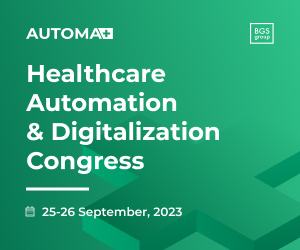Ensuring the health of the public requires the continuous assessment of its populations. In 2002, Doctors David Kindig and Greg Stoddart proffered a useful understanding of the term population health. They defined it as “the health outcomes of a group of individuals including the distribution of such outcomes within the group.” The measurement of such outcomes is an intensely data-driven process that requires sophisticated information technology systems that can capture, measure and evaluate data rapidly to facilitate the timely assessment of the health of a population in order to inform health decision making.
The population health framework uses traditional health data collected from individual clinical visits and consolidates and categorizes them in ways that allow inferences to be made about outcomes of the group, as a whole or subpopulations. These outcomes can be improved by broad therapeutic or systemic change.
Beyond clinical data, because 80% of what makes one healthy occurs outside the clinical encounter through societal influences, the environment and individual behaviors capturing and integrating the social determinants of health is important to capture and integrate into the population health framework. Understanding the outcomes of analysis on a population or subpopulation basis allows for one to access not only how changes in clinical and therapeutic factors improve health, but also how effective or ineffective broad policy or systems change can be as a health improvement tool.
Unfortunately, we have not yet invested in the level of health information technology or data collection across the health sector needed in the rapid onslaught of health threats that is the 21st century. We also do not yet have the linkages to the non-health societal data sets to adequately assess the interaction between social factors and health outcomes. The technology, of course, exists but has not been implemented or adopted by the health sector as it has in many other business sectors.
In 1956, President Dwight D. Eisenhower recognized that the poor state of the nation’s road infrastructure and the shift to automobiles as the conveyance of choice for many Americans created a problem. He saw that with the shift to a more mobile society, the nation needed a new system to rapidly evacuate cities in the case of a national emergency. That is why President Eisenhower signed the Federal-Aid-Highway Act; a law that funded the interstate highway system, improvement of the nation’s key roads, the creation of new roadways and linked the matrix of existing roadways into a comprehensive national system which allowed for the rapid transit across the country.
Today, America is at another crossroad. We have a similar system of patchwork in our health information technology systems infrastructure that are siloed with poor interconnectivity, poorly matching data systems and even the lack of identifiers that allow for easy differentiation from patients with similar names. While we have decent financial and medical record systems for managing individual patients, the systems for population health and public health systems are woefully inadequate.
The COVID-19 pandemic taught us that we need a more robust infrastructure with speedier data and information sharing across a wide range of functions, from clinical to administrative. We need systems that can optimize clinical material, public health material and therapeutic resources. In addition, the need for continued vigilance around ensuring patient confidentiality is essential to maintain HIPAA compliance and keep trust with the systems.
Promising Efforts Under Way
CDC Data Modernization
CDC is working with state and local public health partners to modernize the data gathering and surveillance capabilities of the nation. The goal is to unify and strengthen the data collection efforts, make policy changes that make data sharing easier and enhance the skills and capabilities of the public health workforce to improve their data analytical and technical competencies.
Trusted Exchange Framework and Common Agreement (TEFCA)
The 21st Century Cures Act enabled the U.S. Department of Health and Human Services to create a governing and infrastructure model agreement for a trusted information exchange called the Trusted Exchange Framework and Common Agreement. Last year, several health networks were Qualified Health Information Networks that implemented on a voluntary basis what may become the cornerstone of a national health information framework These secure, interoperable networks include hospitals, public health departments, health insurers, health care providers and other authorized healthcare stakeholders.
Conclusion
Modernizing the data systems to ensure population health is the task of the next decade. It is essential if we are going to be successful at optimizing the benefits of population health improvement.












